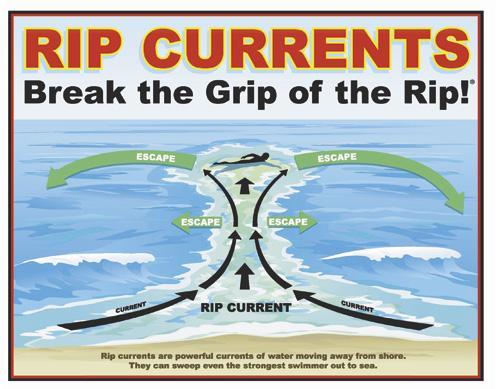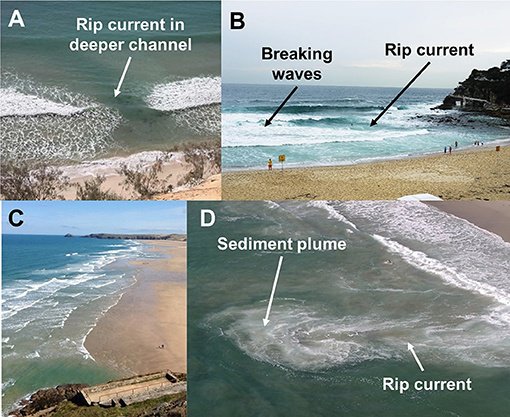This post has already been read 153 times!
Rip currents, sometimes referred to as rip tides or undertows, are powerful currents of water that flow away from the shore and can be hazardous to swimmers and beachgoers. Understanding the problems associated with rip currents and how to safely get away from them is essential for water safety. Here are some key points to consider:

Problems with Rip Currents:
Swift Water Movement
Rip currents can move at speeds of up to 8 feet per second, which is faster than most people can swim.
Pulling Swimmers Away
Rip currents can pull swimmers away from the shore and into deeper water, making it difficult to return to safety.
Exhaustion
Trying to swim against a rip current can lead to exhaustion, increasing the risk of drowning.
How to Get Away from a Rip Current Safely:

Stay Calm
The most important thing is to stay calm if you find yourself caught in a rip current. Panic can lead to poor decision-making.
Don’t Swim Against It
Avoid the instinct to swim directly back to shore against the current. This is extremely difficult and exhausting.
Float and Signal
If you can, float on your back or tread water to conserve energy. Signal for help by waving your arms and shouting if you’re close to other swimmers or lifeguards.
Swim Parallel
Instead of swimming directly back to the shore, swim parallel to the shore. Rip currents are typically narrow, and by swimming parallel, you can eventually swim out of the current’s pull.
Use Sideways Swims
If you’re a strong swimmer and you feel confident, you can try swimming at a slight angle to the shore in the direction of the breaking waves. This can sometimes help you escape the rip current.
Relax and Breathe
Focus on staying as relaxed as possible and maintaining a steady breathing rhythm. Panic and exhaustion can increase the risk of accidents.
Raise One Arm
If you’re signaling for help, raise one arm to make yourself more visible to rescuers.
Use Floatation Devices
If available, grab onto any available floatation devices or flotation aids, such as boogie boards or life jackets.
Wait for Assistance
If you can’t escape the rip current on your own, conserve energy by floating or treading water and wait for assistance from a lifeguard or other swimmers.
Know Before You Go
Before entering the water, it’s essential to be aware of local beach conditions and any rip current warnings. Always swim at beaches with lifeguards if possible.
Remember that rip currents are natural occurrences, and even experienced swimmers can get caught in them. Being aware of the dangers and knowing how to respond can significantly increase your chances of staying safe in the water.